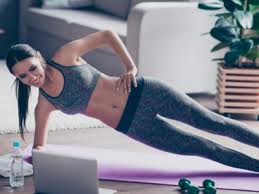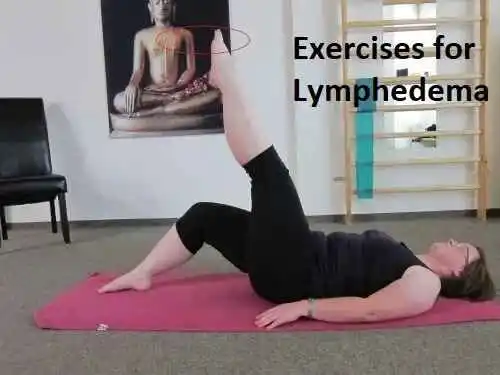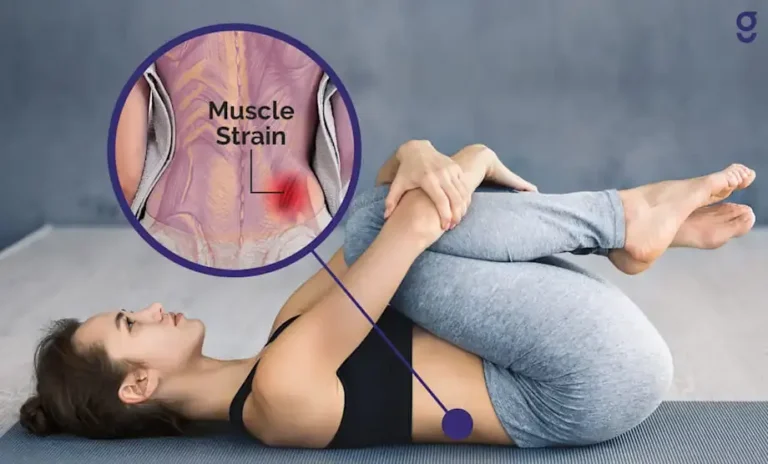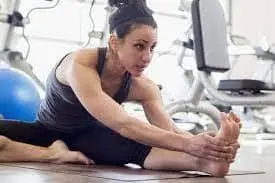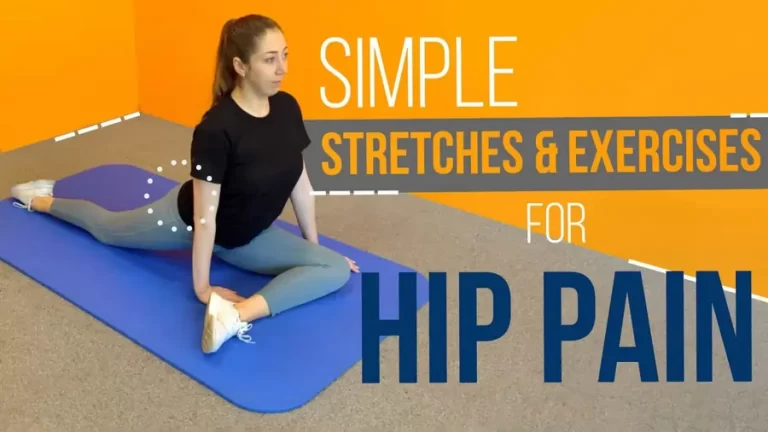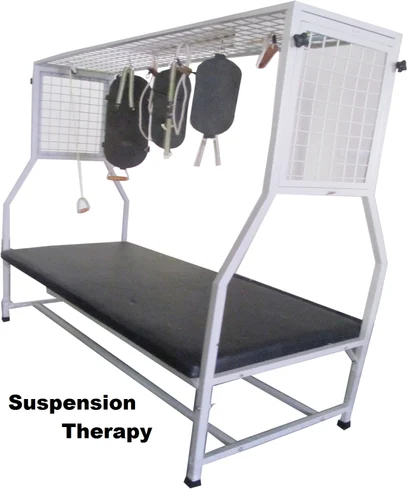Simple and Healthy Exercises at Home
Introduction:
Regular physical activity is an important component of maintaining a healthy lifestyle, and the good news is that you don’t need a gym to get started. Easy, healthful activities that you can do at home are a terrific way to maintain your fitness, increase your strength, flexibility, and mental health.
All fitness levels may benefit from these simple exercises that need little to no equipment. Your general health may be significantly improved by including at-home workouts into your daily routine, regardless of how much time you have, five minutes or thirty minutes.
Simple and Healthy Exercises at Home Video
Simple and Healthy Exercises at Home:
Lunges:
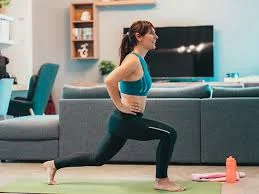
An essential lower-body workout that tones the calves, glutes, and thighs (quadriceps and hamstrings) is the lunge. Stepping forward with one leg and lowering your torso until both knees create about 90-degree angles is how a lunge is executed. The front knee remains just above the ankle, while the rear knee hovers just above the floor. They are appropriate for all fitness levels and may be performed using only body weight or, for a more difficult option, additional resistance like dumbbells.
Push-ups:
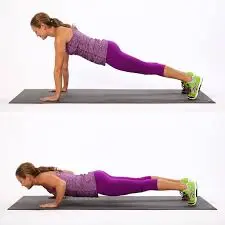
Starting in a high plank posture, place your hands slightly wider than shoulder-width apart to begin a push-up. Bend your elbows until your chest almost touches the floor to lower your body, then push yourself back up to the beginning position.
Push-ups improve posture, increase endurance, and strengthen the upper body. They are a flexible and efficient workout for increasing general body strength since they can be adjusted to accommodate varying fitness levels.
Squats:
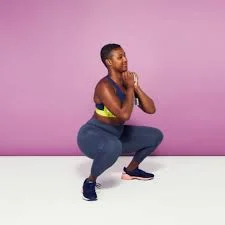
A basic lower-body exercise, squats work the quadriceps, hamstrings, and glutes in particular, as well as the thighs, hips, and buttocks. Squats are performed by standing with your feet shoulder-width apart, bending your knees, and lowering your hips as though you were reclining in a chair while maintaining a straight back and an elevated chest. Then, to get back to standing, push through your heels. They are great for improving mobility and may be done with body weight alone or with more resistance, such as barbells or dumbbells, for a more intense workout.
Standing overhead dumbbell presses:
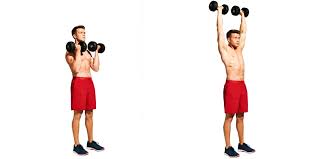
Hold a dumbbell at shoulder level in each hand, stand with your feet shoulder-width apart, and push the weights above until your arms are completely stretched. Because you’re standing, this exercise helps strengthen your shoulders, enhance your posture, and activate your core for stability. It may be performed at home or in the gym and is a fantastic complement to any upper-body or full-body exercise program.
Dumbbell rows:
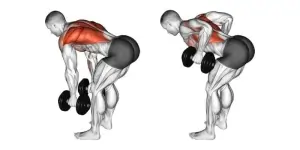
A powerful strength-training exercise, dumbbell rows work the biceps and the muscles of the upper and middle back, such as the latissimus dorsi, rhomboids, and trapezius. A dumbbell row is performed by holding a dumbbell in each hand, bending at the waist while maintaining a straight back, and bending your elbows to draw the weights up toward your sides.
At the peak of the exercise, squeeze your shoulder blades together, and then gradually bring the weights back down. Dumbbell rows are a useful component of any upper-body training regimen since they aid with posture correction, back strengthening, and pulling strength enhancement.
Single-leg deadlifts:
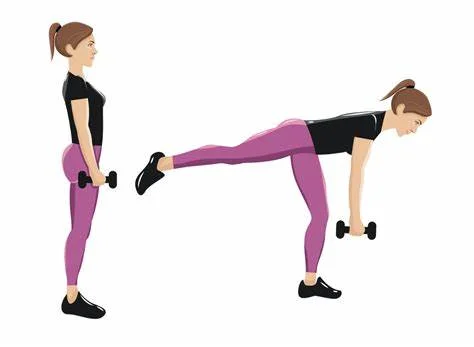
Holding a dumbbell or just your body weight, stand on one leg, then gently bend at the hips to extend the other leg straight behind you while your chest descends forward. Drive through the heel of the standing leg to go back to the standing posture while maintaining a flat back and an engaged core. This exercise is perfect for athletes and anybody wishing to increase functional lower-body strength since it increases stability, develops the posterior chain, and improves coordination.
Burpees:
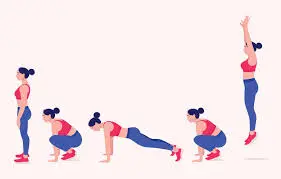
It blends strength with cardio. Burpees are performed by standing, squatting, and placing your hands on the ground. After kicking your feet back into a push-up stance and performing a push-up (if desired), you should immediately hop your feet back toward your hands and leap upward. Burpees are a great way to increase cardiovascular fitness, burn calories, and strengthen your entire body. They are a well-liked option for vigorous at-home exercises as they don’t require any special equipment and can be performed anywhere.
Side planks:
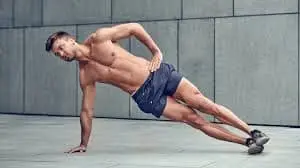
To do a side plank, stack your legs on one side, position your elbow beneath your shoulder, and raise your hips off the floor so that your head and feet make a straight line. Maintain this posture by keeping your hips up and your core tight. Side planks help improve stability, balance, and posture, and they’re especially effective for building core endurance without stressing the lower back. They can be modified for beginners or made more challenging with leg lifts or added weights.
High planks:
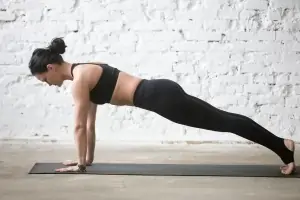
A basic core exercise that tones the arms, shoulders, chest, and glutes is the high plank. Starting in a push-up posture, place your hands just behind your shoulders, stretch your arms fully, and align your body in a straight line from your head to your heels to do a high plank. High planks aid with posture correction, core stability development, and improved body control in general. They are ideal for at-home or gym routines since they don’t require any equipment and may be held for extended periods or included in dynamic exercises.
Bird Dog:
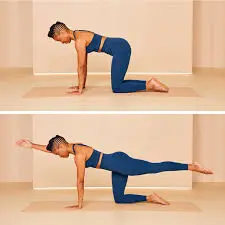
Bird Dog is a balance and core stability exercise that works the shoulders, glutes, lower back, and abdominal muscles. Using your core, hold for a brief while before going back to the beginning and repeating on the other side. Bird Dog is a great low-impact workout for people of all fitness levels since it builds deep core muscles, improves posture, and improves coordination. It’s especially good for spinal stability.
Superman:
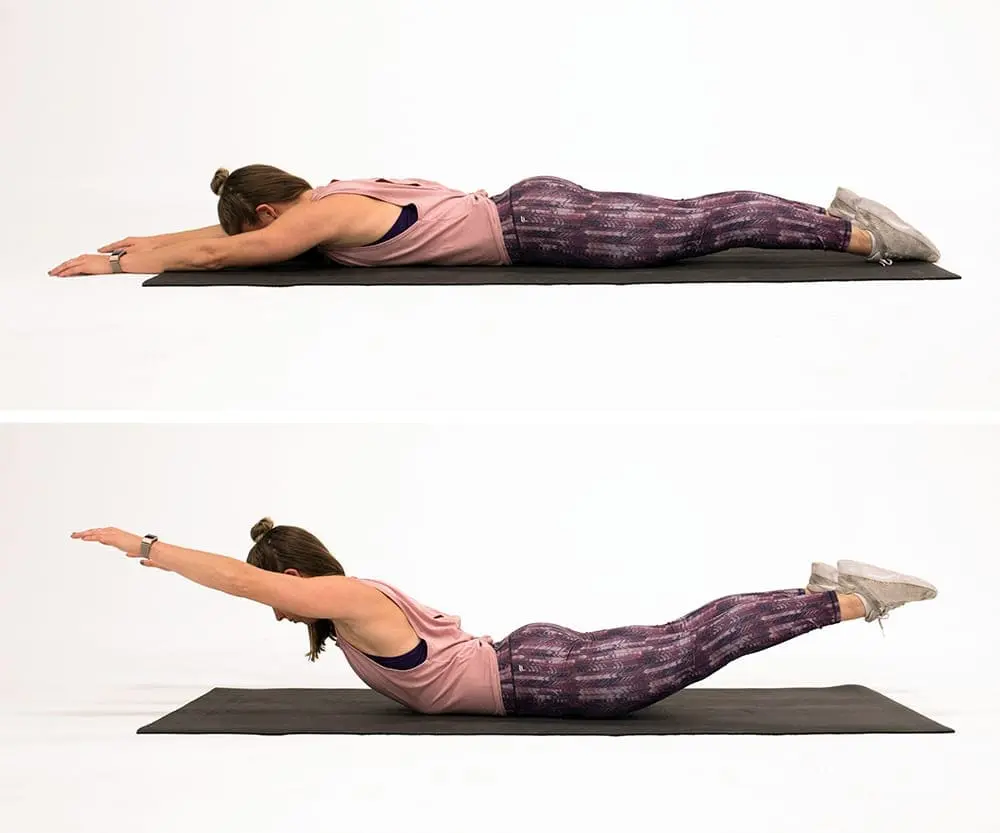
Superman is a bodyweight exercise that strengthens the posterior chain by working the shoulders, glutes, and lower back. The Superman exercise involves lying face down on the floor with your legs spread out behind you and your arms straight out in front of you. Squeeze your glutes and lower back muscles while you raise your arms, chest, and legs off the ground as high as you can comfortably do all at once. Slowly descend back down after holding for a few seconds at the top. This exercise is excellent for the health of the core and spine since it helps with posture, lowers the risk of back pain, and increases back muscular endurance.
Mountain Climbers:
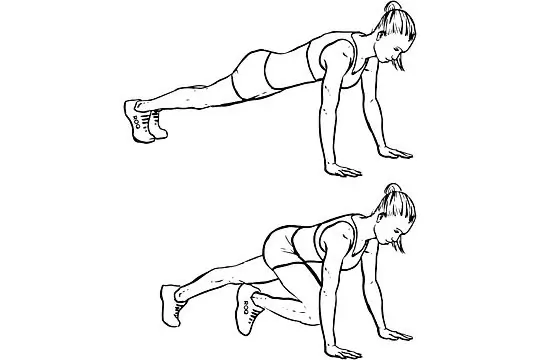
A dynamic, high-intensity bodyweight workout that blends cardio and core building is the mountain climber. Start in a high plank posture, place your hands behind your shoulders, and keep your body in a straight line to complete mountain climbers.
Maintaining a strong core and level hips, quickly drive one knee toward your chest before switching legs in a sprinting motion. This workout increases heart rate and burns calories while targeting the legs, shoulders, chest, and abs. Mountain climbers may be done anywhere without any special equipment and are great for increasing cardiovascular endurance, agility, and full-body coordination.
High knees:
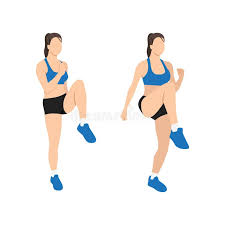
High knees are an intense aerobic workout that works the legs and the core while raising the heart rate. To do high knees, stand tall with your feet hip-width apart. Then, while you run in place, swiftly raise each knee as high as you can toward your chest. To keep your balance and intensity, pump your arms in time with your legs. This workout enhances lower-body endurance, agility, coordination, and cardiovascular fitness. High knees are ideal for high-intensity interval training (HIIT), warm-ups, and incorporating a quick energy boost into any exercise regimen.
Conclusion:
In conclusion, you may maintain your fitness, increase your flexibility, and enhance your general health without going to the gym by doing easy and healthful activities at home. All fitness levels may benefit from these simple workouts that need little to no equipment.
From the comfort of their own home, people may improve their physical health and lead more active, balanced lives by consistently performing at-home exercises like squats, lunges, push-ups, and stretches.
FAQs
Does walking qualify as exercise?
Indeed, walking counts as exercise. It has several health advantages and is a low-impact activity that is simple to add to everyday activities. Brisk walking is regarded as moderate-intensity exercise and can improve general fitness and well-being, even if it might not be as strenuous as certain other types of exercise.
When is the ideal time to work out?
Early morning workouts are frequently mentioned as helpful for creating a pattern, increasing metabolism, and encouraging better sleep, although the “best” time to exercise depends on personal tastes and objectives. Exercise in the afternoon and evening, however, could be beneficial for cardiovascular health as well as for building muscle strength and power. In the end, the best time to work out is when you are most likely to stick with it and like it.
Can I work out while I’m menstruating?
You can work out when you’re on your period, yes. By releasing endorphins and increasing blood flow, exercise can help reduce period symptoms, including cramps, bloating, and mood swings, even if some women may feel uncomfortable or exhausted.
Is it true that walking burns tummy fat?
Indeed, walking can aid in the burning of abdominal fat. It’s a calorie-burning, efficient type of exercise that can help reduce belly fat and other body fat when paired with a calorie-deficient diet. Walking daily can help you lose weight and improve your general health, even if it might not be the only strategy to target belly fat.
Is working out before bed a smart idea?
Exercise before bed is generally not harmful and may even be helpful for most individuals; the timing and intensity of the workout are crucial. Light to moderate exercise can enhance the quality of sleep for many people, while excessive activity right before bed may cause sleep disturbances for individuals. Intense workouts should ideally be completed two to three hours before bed to give your body time to calm down and your heart rate to stabilize.
How can I lose belly fat?
A balanced diet, consistent exercise, and enough sleep are the key to reducing belly fat. This entails cutting back on calories, particularly from processed meals and sugar-filled beverages, and boosting physical exercise, especially strength and aerobic training. Additionally, it’s critical to get adequate sleep because sleep loss can lead to the buildup of belly fat.
Is it preferable to work out in the morning or the evening?
Consider your fitness objectives. For instance, early workouts could be more appropriate if your objective is to increase your metabolism and start the day with energy. Evening workouts may be preferable if your goals are to increase performance and unwind after a demanding day. Think about your preferred temperature.
Exercise snacks: what are they?
The key of an exercise snack is to visualize your typical workout and then reduce it to the size of a coffee break. These are short bursts of physical exercise that can last anywhere from one minute to fifteen minutes and are done many times a day.
What time of day is ideal for working out?
Although the ideal time to work out varies depending on personal tastes and objectives, in general, morning exercises can build a pattern and increase metabolism, while evening workouts can take advantage of peak physical performance. Exercise in the afternoon is also helpful for certain people, particularly for HIIT. In the end, the best time is when you are most likely to work out regularly.
Which workout causes abdominal fat to burn?
Any activity that increases your heart rate, such as dancing, swimming, jogging, or walking, is considered aerobic exercise. Playing with your kids, cleaning, and gardening might also fall under this category. You can lose belly fat with other forms of exercise, such as yoga, Pilates, and strength training.
How many pushups do you do each day?
The recommended daily quantity of push-ups varies according to each person’s fitness level and objectives. More experienced people may strive for 50–100 repetitions or more, divided into several sets, while beginners may begin with 2-3 sets of 5–10 repetitions. To avoid injury, it’s critical to give good form more importance than quantity and to schedule rest days.
References:
- Davis, N. (2025c, May 1). 30 moves to make the most of your At-Home workout. Healthline. https://www.healthline.com/health/fitness-exercise/at-home-workouts
- Crna, R. N. M. (2025, April 17). 20 cardio exercises to do at home with minimal equipment, from beginner to advanced. https://www.medicalnewstoday.com/articles/cardio-exercises-at-home
- Harvard Health. (2024b, February 20). 5 of the best exercises you can ever do. https://www.health.harvard.edu/staying-healthy/5-of-the-best-exercises-you-can-ever-do
- Desk, T. L. (2025, March 27). 9 easy and at-home exercises that help us live a long and healthy life. The Times of India. https://timesofindia.indiatimes.com/life-style/health-fitness/fitness/9-easy-and-at-home-exercises-that-help-us-live-a-long-and-healthy-life/articleshow/119585611.cms

